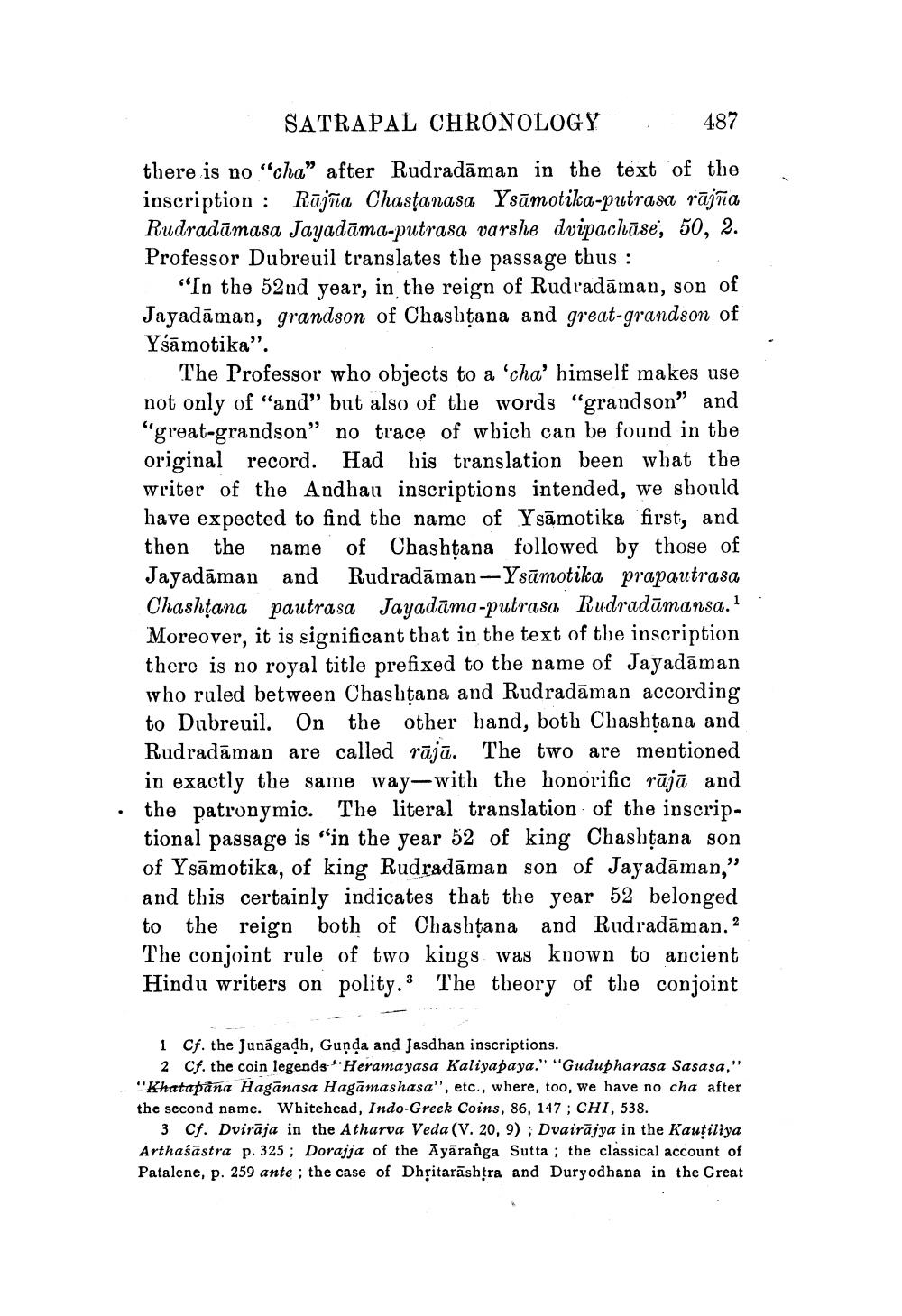________________
SATRAPAL CHRONOLOGY 487 there is no "cha" after Rudradāman in the text of the inscription : Rājīia Chastanasa Ysāmotika-putrasa rājña Rudradāmasa Jayadāma-putrasa varshe dvipachūse, 50, 2. Professor Dubreuil translates the passage thus :
"In the 52nd year, in the reign of Rudradāman, son of Jayadāman, grandson of Chashtana and great-grandson of Yśāmotika".
The Professor who objects to a 'cha' himself makes use not only of "and" but also of the words "grandson” and "great-grandson” no trace of which can be found in the original record. Had his translation been what the writer of the Andhau inscriptions intended, we should have expected to find the name of Ysāmotika first, and then the name of Chashtana followed by those of Jayadāman and Rudradāman-Ysāmotika prapautrasa Chashtana pautrasa Jayadāma-putrasa Rudradāmansa. Moreover, it is significant that in the text of the inscription there is no royal title prefixed to the name of Jayadāman who ruled between Chashtana and Rudradāman according to Dubreuil. On the other hand, both Chashtana and Rudradāman are called rājā. The two are mentioned in exactly the same way-with the honorific rājā and the patronymic. The literal translation of the inscrip. tional passage is "in the year 52 of king Chashtana son of Ysāmotika, of king Rudradāman son of Jayadāman," and this certainly indicates that the year 52 belonged to the reign both of Chashtana and Rudradāman.? The conjoint rule of two kings was known to ancient Hindu writers on polity. The theory of the conjoint
1 Cf. the Junagadh, Gunda and Jasdhan inscriptions.
2 Cf. the coin legends Heramayasa Kaliyapaya." "Gudupharasa Sasasa," "Khatapana Hagānasa Hagāmashasa", etc., where, too, we have no cha after the second name. Whitehead, Indo-Greek Coins, 86, 147 ; CHI, 538.
3 Cf. Dvirāja in the Atharva Veda (V. 20, 9) ; Dvairājya in the Kauțiliya Arthaśāstra p. 325; Dorajja of the Āyāranga Sutta ; the classical account of Patalene, p. 259 ante ; the case of Dhritarāshtra and Duryodhana in the Great




